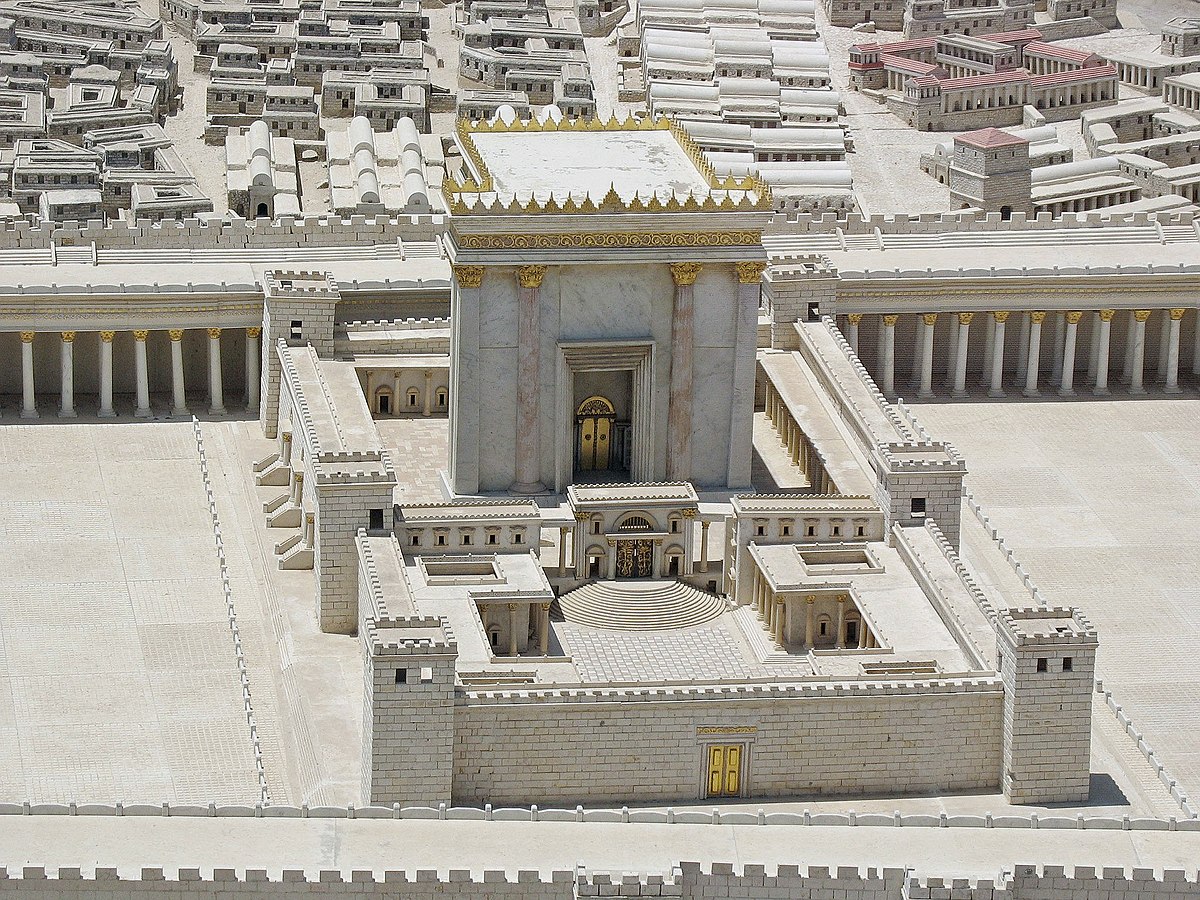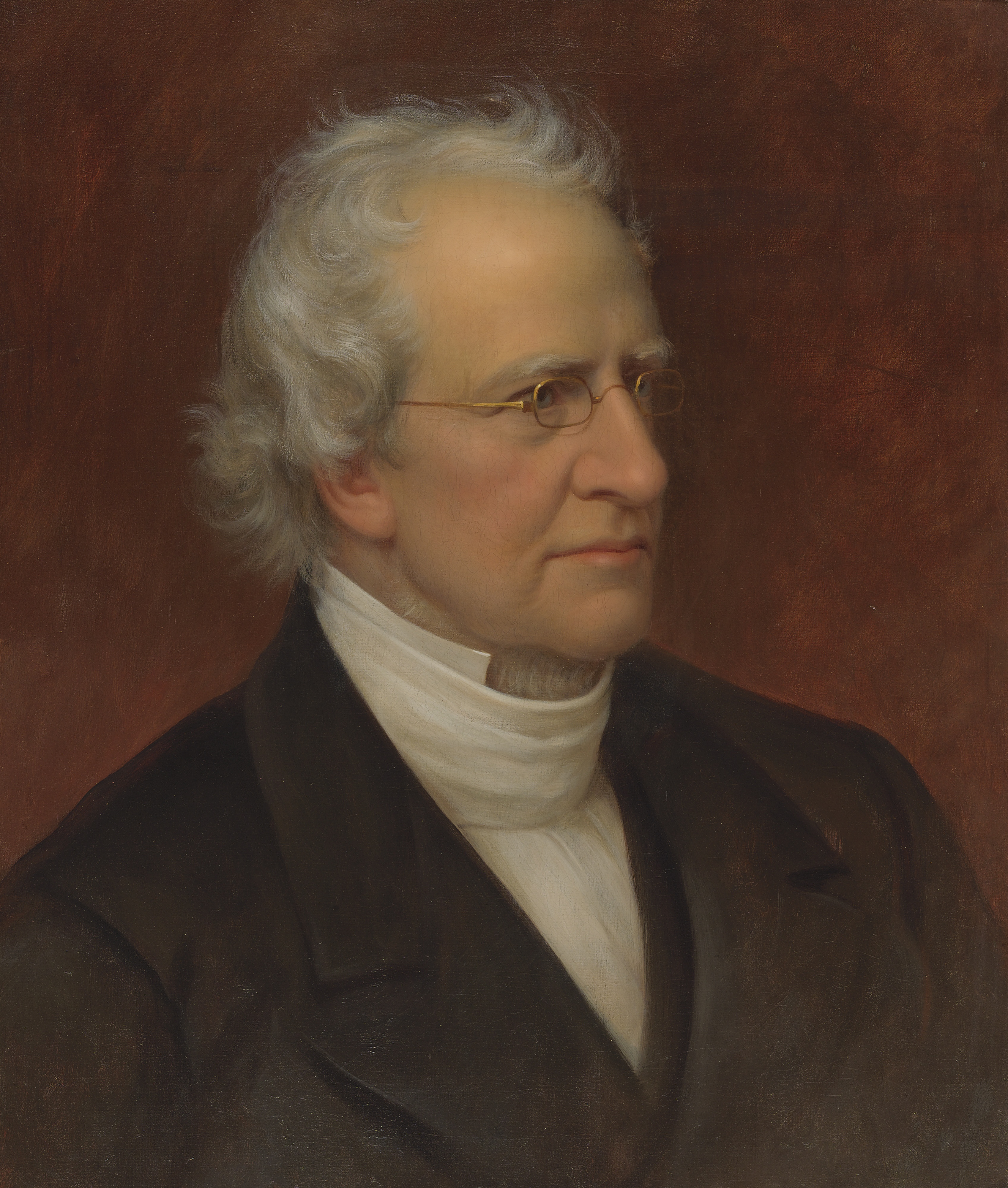Introduction
About the Author
Lester L. Grabbe is a retired American scholar and Emeritus Professor of Hebrew Bible and Early Judaism at the University of Hull, England. As an historian of ancient Judaism, he has authored several standard treatments.
Methodology of the Author
Historical investigation
Summary of Contents (Excellence)
This book is an introduction to Judaism of the Second Temple period. That is, it covers the time beginning in the Persian period and ending with the fall of the temple (539 BCE–70 CE), though the author finds it helpful to go as late as the Bar Kokhba revolt (132–35 CE). He has already given a detailed history of the Judaism of the period in Judaism from Cyrus to Hadrian (1992) and the four-volume work, History of the Jews and Judaism in the Second Temple Period, so what he is doing in this much briefer study is to try to introduce the beginner—the student, the educated lay person, the non-specialist—to the subject. As the title of the present book indicates, I focus on the first century BCE and CE. (It is the convention now among scholars of early Judaism to use the abbreviations CE and BCE when giving dates. They stand for ‘Common Era’ [CE] and ‘Before the Common Era’ [BCE], being equivalent to AD and BC.) However, he does not limit himself to those two centuries since a complete understanding of them requires a general knowledge of the preceding several centuries. Chapter 1 provides an overview of Jewish history for the Second Temple period (though some periods are treated more fully in later chapters) and then discusses the main sources. It is important that the reader takes note of where we get our knowledge of the Judaism of this time. There is no magical key to understanding Judaism during this era. We are all dependent on a handful of sources from which most of our knowledge comes. After the introductory chapter, the next four chapters look at various ‘currents’ or streams within Judaism. By treating them as moving streams we begin to see the dynamic aspect of Jewish history and realize that much of it is produced by the interaction of various movements. So I discuss textual Judaism (Chapter 2), revolutionary Judaism (Chapter 3), eschatological Judaism (Chapter 4), and the strange phenomenon known as Gnosticism which seems to have Jewish roots (Chapter 5). Together they encompass most facets of Judaism of the time. What will soon become clear to the reader is that the idea of ‘orthodoxy’ or a ‘state church’ is not a good way of looking at Judaism before 70. British readers need to put the model of the Church of England out of mind. There was a centre to the religion: worship at the Jerusalem temple. Most Jews accepted the sacredness of the temple and the general teachings of the Torah. But there was no official orthodoxy (in the Christian sense), for it is clear that there were many interpretations of the Torah and many different views about how to apply the law outside the temple (within the temple, the priests were in control). Thus, each of the Chapters 2–5 tells us about one aspect of Judaism, but as will soon be apparent the various currents are not isolated entities. On the contrary, a single individual may have been a part of more than one current. A study of one particular current helps us to understand one aspect of Judaism, while the study of all four discussed here provides a quite comprehensive picture of Judaism—albeit, a complex picture, like a mosaic with many different parts. I quote widely from the original sources at different points, both to illustrate my points and to help the reader to become more aware of the source of our knowledge. I usually use the New Jewish Publication Society translation for quotations from the Hebrew Bible (Old Testament). Quotations from the New Testament and the Apocrypha are taken from the New Revised Standard Version. For Philo, Josephus, and the Greek and Roman writers I generally use the Loeb Classical Library. The Dead Sea Scrolls are usually quoted from the translation of Geza Vermes (see the end of Chapter 1). For the Pseudepigrapha, the translations in the Old Testament Pseudepigrapha and the Apocryphal Old Testament are usually used (again, see the end of Chapter 1). The Nag Hammadi texts in Chapter 5 are quoted from The Nag Hammadi Library in English. This book originated in the Frankland and West Weekend School Lectures given at Birkbeck College on 25–26 March 1995, and were originally published as An Introduction to First Century Judaism (1996). I thank Mr Michael Combermere and Dr Gwen Griffith Dickson for inviting and hosting me, and Professor Michael Knibb of King’s College, London, for suggesting my name and chairing the first two lectures. The present version has had a number of revisions, especially in Chapters 1 and 6, and all the bibliographies have been updated. Mrs Jerilyn Sculley has kindly read Chapter 1 from the point of view of the educated lay person. This book is very much the product of teaching early Judaism for many years, especially at the University of Hull but also in America and in various lectures in the UK. To those many students, who have been my willing (for the most part) guinea pigs, I dedicate this book.
Historical Overview
The purpose of this chapter is to orient the reader to the history of the people of Judah and the Jewish Diaspora, for the seven hundred years from the mid-6th century BCE to the end of the Bar Kokhba revolt about 135 of the Common Era, what is often referred to in Jewish history as the Second Temple period. It will give you a broad overview of this period of history and provide a chronological framework of events, since the other chapters are more topical and will deal only with some aspects of the history of Judaism.
The Period of the Israelite and Judahite Monarchies
In this section, you will be given a quick survey of Judahite history from the time of the Israelite monarchy to the period after the fall of the temple and Jerusalem to the Romans. The period of the ‘First Temple’ (the Israelite and Judahite monarchies) came to an end in 587/586 BCE when the Babylonians conquered Jerusalem, executed some of the royal family and took others captive, and destroyed the temple. Some of the people were also deported, though the actual figures preserved in the biblical literature (e.g. Jeremiah 52) suggest only a minority of the population. Those deported may have been some of the ablest and leading members of the society, but the bulk of the population apparently remained in the land, though many people died in the war and from disease or related causes in the wake of the Babylonian conquest. Judeans had already been deported to Babylonia in the captivity of 597 BCE, and the new deportations added to them. Indications are that this community in Babylonia grew and expanded over time to become a significant Jewish population outside Palestine. Some of those returned in the early Persian period, but evidently the bulk of the deportees and their descendants remained in Babylonia. For the next half century, the Jews in Palestine were evidently in a low state, with Jerusalem desolate and the region administered from Mizpah. This is often referred to as the ‘exilic period’. During this time Judah was under the rule of the Neo-Babylonian kings, primarily Nebuchadnezzar, Amel-Marduk, and Nabonidus.
Persian Rule
Cyrus the Great conquered Babylon in October 539 BCE. This was the official founding date of the Persian empire which continued for more than two centuries. Some scholars have argued that the Persian period was one of the most productive for Hebrew literature. During these two centuries, earlier Israelite literature and traditions were edited and others were written, or so many scholars think; if they are right, this was one of the most prolific times of Jewish literary activity.
The Greek Conquest and Ptolemaic Rule
The next major events affecting the Jews around Jerusalem occurred with the coming of the Greeks. In 334 BCE Alexander led a Greek army against the Persian empire. Darius III failed to stop him at Issus in Asia Minor the next year. Most of Syria submitted to the Greeks at this point, except for two cities: Tyre and Gaza. Alexander besieged Tyre and took it after seven months. Whatever Onias’ motives, Joseph Tobiad used his actions as an occasion to advance himself in the eyes of both the Jewish community and the Ptolemaic government: he went to the Ptolemaic ruler, apologized for the actions of the high priest, and paid the tribute.
The Seleucids and the ‘Hellenistic Reform’
A strange episode took place under Seleucus, if there is any truth in 2 Maccabees 3. Seleucus was informed that a good deal of money was kept in the Jerusalem temple treasury, so he sent one of his officers to confiscate it for the royal coffers. This seems not to have happened, though. Hellenization was a centuries-long process of synthesis and diversification. It was not the simple imposition of Greek culture on the natives; indeed, the Greeks on the whole did not impose their culture but rather jealously preserved their ‘superior’ political and cultural position in Near Eastern society. It was mainly the natives who sought to gain status and advantage by learning Greek and adopting Greek customs.
The Maccabaean Revolt
Our sources emphasize the place of the Maccabean family, but that is probably not the full story. What we do know is that Judas Maccabee and his brothers eventually secured leadership of the resistance. The books of 1 and 2 Maccabees recount a series of military encounters. We shall not look at those in detail, though in several cases important victories were won. We can sum up by saying that over a period of three years, the Maccabee brothers and their followers won sufficient victories against the Seleucids to take back the temple and purify it.
The Hasmonaean Dynasty
The Maccabean dynasty is traditionally referred to as the ‘Hasmonaeans’, after an ancestor. Hasmonaean rule can perhaps be formally dated from Simon’s rule (143–135 BCE). He negotiated with the Seleucid ruler Demetrius II who made some fairly extensive promises to him.
The Roman Yoke
Pompey’s conquest of Jerusalem must have been a terrible blow to many Jews. The new province of Judaea and its leaders became caught up in the internecine warfare of the Late Roman Republic. Pompey himself died at the hands of Antony and Julius Caesar in 48 BCE. The author of the Psalms of Solomon (2:29–33) took grim satisfaction in this humiliation and death of the conqueror of Jerusalem.
The Reign of Herod the Great
Herod has been infamous in history. Some of this reputation is deserved and some of it is not. He was a determined ruler who held on to power despite some major adversities and setbacks. Thus, Herod had his faults, but his reign was also characterized by many good points. Any evaluation must consider both sides of the question. One thing he probably was not guilty of was the ‘slaughter of the innocents’. This is a legend reported only by the writer of Matthew 2:16–18 and has no basis in anything known from the history of that time.
A Roman Province Once Again
Now that Judah had become a Roman province, a census had to be taken because direct Roman taxation would not be imposed. Thus after a brief respite, Judaea was once again a Roman province and subject to Roman governors.
The 66–70 War with Rome and its Consequences: A New Form of Judaism
The outcome was predictable; why the Jewish leadership ever thought it could win against Rome is a puzzle, as are the many activities of the various revolutionary groups which made them fight each other more intensely than the Romans. In any case, the religious consequences were profound.
Further Jewish Revolts against Rome
Whatever the reason, a further series of revolts broke out. As it turns out the Jewish community was not yet ready to bow unconditionally to the Roman will.
The Sources: How Do We Know What We Know?
It is very important for students to be aware of the source of our knowledge of the Jews and Judaism during this period. Books of the Bible: Several books of the Bible were written during the Second Temple period and serve as useful sources for certain sorts of information. Two biblical books claim to describe the Jews of Palestine in the Persian period; these are Ezra and Nehemiah. Josephus: The backbone of any history of this period is the writings of Flavius Josephus. The important thing is to use his writings critically, recognizing his aims, his biases, the quality and extent of his sources, and gaps in his information. Philo of Alexandria: Philo (c. 20 BCE–50 CE) is known mainly for his biblical commentaries making use of the allegorical method. The Apocrypha: The term Apocrypha (Greek “hidden”) is applied to a set of writings which are in the Catholic (Roman and Orthodox) canon but not in the Jewish or Protestant canons (the term Deutero-canonical is sometimes used of most of them). They are made up of a variety of literary genres: epistle, history, tale, wisdom. The Pseudepigrapha: The name Pseudepigrapha implies writings falsely attributed. This is not actually very helpful because scholars agree that much of the canonical literature is also pseudepigraphical. The Dead Sea Scrolls: Since 1947 a great many writings have been found in the Judaean desert west of the Dead Sea. Many of these were found in the Qumran caves and are the specific writings known as the Qumran scrolls.
Textual Judaism: The Priestly and Scribal Current
Introduction
It is natural that people often assume that Judaism in the Second Temple period was more or less like contemporary Judaism, in which people meet weekly or even more frequently in synagogues to pray, worship, and hear the Bible read.
Priests and Levites
The priesthood in general, and the high priest in particular, dominated the Jewish state during the Second Temple period. The priesthood was far broader than just the ‘sons of Aaron’, however, it included the ‘lower clergy’ known by the name of Levites. The genealogies in Ezra 2 and Nehemiah 7 break down the various cultic personnel into Levites, singers, gatekeepers, temple servants, and priests (Ezra 2:36–63; Nehemiah 7:39–60, 72).
Priestly Rule of Judah
Whatever its activities outside the strict boundaries of the cult during the monarchy, the priesthood took on an important new role during the post-exilic period. Whether or not there was a provincial governor during the Persian and Greek periods, various sources show the importance of the high priest in the internal Jewish government.
The Wise and the Intellectual Tradition
The wisdom books take up a significant section of the Old Testament: Proverbs, Job, and Qohelet (Ecclesiastes), plus the deutero-canonical books of Ben Sira and Wisdom of Solomon.
Scribes
The term ‘scribe’ (grammateus in the Greek sources) has a wide meaning, similar to our word ‘secretary’. Scribes would have functioned at various levels in Jewish society, from private (wealthy) households and businesses to civil administration to the temple itself.
The Pharisees
Perhaps more has been written on the Pharisees than any other ancient Jewish group. There are two reasons for this: first, they have often been seen by Jewish scholars as forerunners of Rabbinic Judaism; second, their frequent mention in the New Testament has made them a byword in many Christian writings. The New Testament: Here they appear as opponents of Jesus and are criticized as excessively concerned about legal technicalities and picayune points of the ritual law (Matthew 23:23–28; Luke 11:37–44). Rabbinic Literature: We would expect Jewish literature to give us the most information about the Pharisees.
The Sadducees
The Sadducees have been everyone’s whipping boy. No Jewish group today claims to be heirs of the Sadducees.
The Essenes
Another group credited with a great emphasis on interpreting scripture was the Essenes. These have also been widely associated with Qumran since the discovery of the Dead Sea Scrolls.
Revolutionary Judaism: The Political and ‘Messianic’ Current
Introduction
A traditional Jewish belief was that the descendants of Israel had once constituted a great nation which had conquered and controlled a large part of the Eastern Mediterranean world. The Jews remembered that under David and Solomon, they had subdued the surrounding nations and had established dominance from the River of Egypt to the Euphrates. In reality, Judah had been under Assyrian rule for much of the last century even of the monarchy. The Assyrians fell before the Neo-Babylonians, but Babylonian rule lasted only a half century or so, to be replaced by the Persians. The Persians held sway for over two centuries before the Greeks, under Alexander, defeated Darius III and established their own empire. Although the Greeks were European, much of Greek rule was subsumed under the Seleucid and Ptolemaic empires which were true heirs of the Near Eastern empires before them.
The Maccabaean Revolt
The Maccabaean resistance is presented as holy war in 1 Maccabees, and their victories as due to a combination of personal astuteness and bravery and of divine intervention.
The Roman Overlords
The Hasmonaean kingdom was brought to an end most immediately by its own actions. Revolts during the ‘War of Varus’: The Roman commander Sabinus called for help from the legions commanded by Varus, the imperial legate in Syria.
The ‘Fourth Philosophy’ and the Sicarii
He also suggests that the ‘Fourth Philosophy’ gave rise to the Sicarii in the 40s.
The Zealots and the 66–70 War
It was during this revolt that the group called the Zealots first becomes apparent. There is a debate on the use of the term ‘zealot’ (from Greek zelotes). The term may be used generically for anyone who displayed zeal in devotion to God like that of Phinehas (Numbers 25), and for this reason some have used it indiscriminately to refer to any revolutionary group.
Messianic Expectations
The problem for the scholar of early Judaism is, first, that the Gospels have their own agenda, centring on Jesus and the development of Christology and, then, the apparent assumption that there was a strong and single view of the Messiah among the Jews at this time.
Eschatological Judaism: The Apocalyptic Current
Introduction
The term ‘eschatology’ refers to the concept of the ‘last things’: the end of life, the end of the world, final judgement, life after death.
Definition and Origins of Apocalypticism
Defining apocalypticism is not easy. The term comes from the Greek words apokalupto, ‘to reveal’, and apokalupsis, ‘revelation’, but has been especially influenced by the contents of such books as the New Testament book of Revelation.
Apocalypses and Related Literature
It is debated as to whether some of the prophetic books of the Old Testament already represent apocalypses. For example, a number of scholars would reckon that Zechariah 1–8 was already an apocalypse. Other Old Testament sections which have certain resemblances to apocalypses are Joel, Isaiah 24–27, and portions of Isaiah 56–66. The one Old Testament book which is universally counted as an apocalypse is Daniel 7–12.
Ideas about Life after Death
Most of the books of the Hebrew Bible do not seem to envisage life after death as such. Resurrection of the Dead: It is sometimes asserted that the resurrection of the body was the characteristic Jewish belief. The judged souls go either through the strait gate which leads to life (for the righteous) or the broad gate to destruction (for the sinners).
Expectations for the End of the World
There was a widespread view that the age of the world was finite and that history was played out according to a predetermined divine plan.
Calculating the Endtime
Many of the references to the endtime are non-specific, but they often make two assumptions: the endtime was predicted by God long ago, and the writers themselves are living in or near that time. The Age of the World: Based on Psalm 90:4 the view developed that human history followed the plan of a thousand-year week. The Seventy-Weeks Prophecy: Daniel 9 has one of the most startling prophecies with a specific time frame.
Inverted Judaism: The Gnostic Current
Introduction
The Gnostic texts often seem anti-Jewish, and many secondary treatments speak as if Gnosticism was plainly and simply a perversion of Christianity. The patristic writers saw the Gnostics as a heresy which had broken away from Christianity, and their whole approach was to show how bad it was.
Patristic Sources
A number of patristic accounts are known, but many of these are dependent on one another and give little or no original material.
The Basic Gnostic Myth
A Gnostic myth apparently lies at the base of the various Gnostic systems known to us. It is this myth which explains what humans are, where they came from, and how they may gain the state which is their ultimate goal.
Manichaeans
The Manichaean sect was founded by Mani (216–277 CE), after whom it was named.
Mandaeans
This is a small sect which has survived in Iraq and Iran. When it was first discovered, it was sometimes referred to as ‘John Christians’ because they looked to John the Baptist as their predecessor.
Examples of Jewish and Gnostic Parallels
Plays on Semitic Words: To the scholar of Jewish literature in Hebrew and Aramaic, a number of the names and other philological data leap out as evidence of a Jewish source. The Myth of the Fallen Angels: An old myth in Judaism is the story of the union of angels with human women. The Garden of Eden: The Gnostic myth has a great deal taken from the Garden of Eden episode of Genesis, some points of which have already been noted. Other Parallels: The figure of Sophia is quite important to the core Gnostic myth. Her name is the Greek word for ‘wisdom’.
Summary and Conclusions
Each of the currents described here—textual, revolutionary, apocalyptic, Gnostic—represents a single moving force in the Jewish society of Palestine at that time, but this does not mean that each was separate and distinct.
Critical Questions
What was the intention of the Gnostic movement? & what is the method to spread each other? Do they have any similarity with current teachings in our day?




